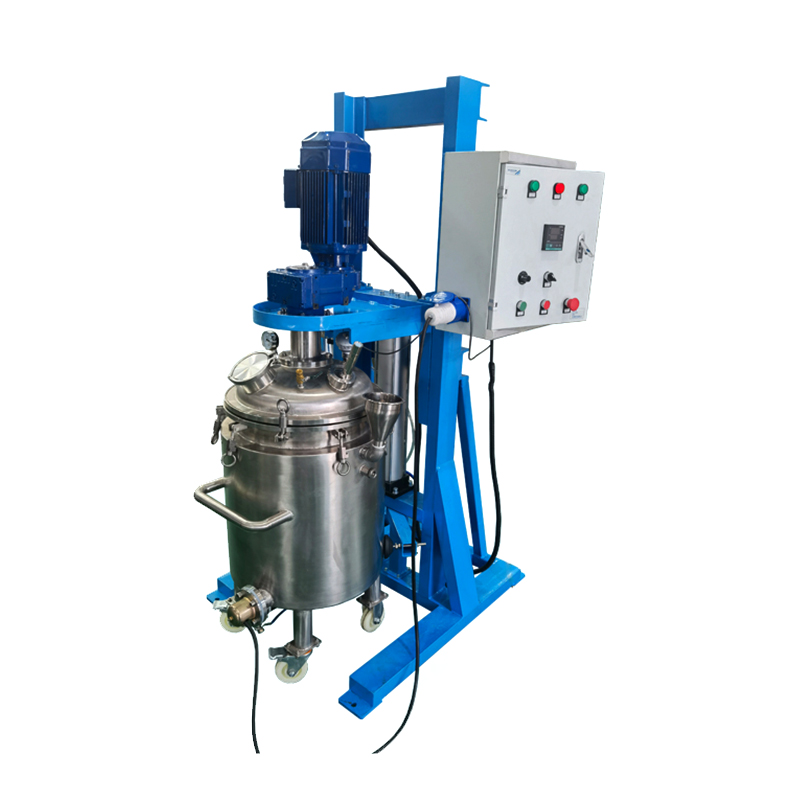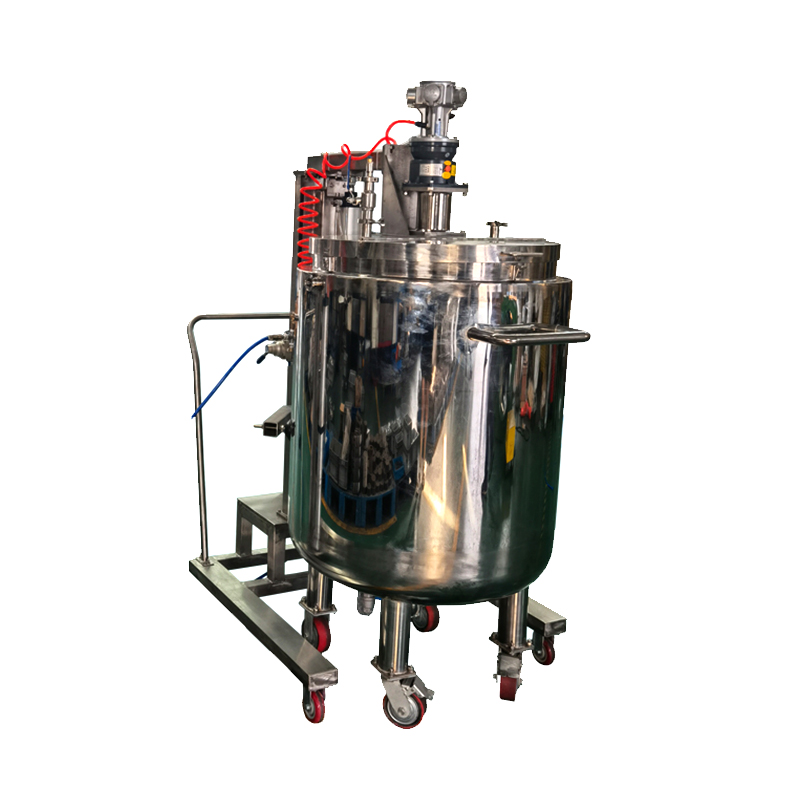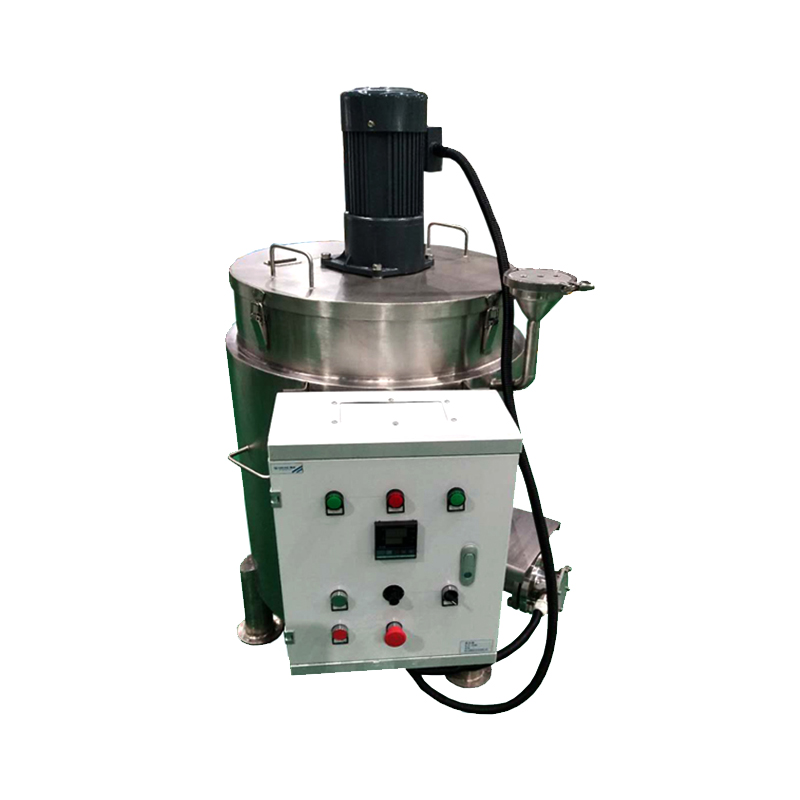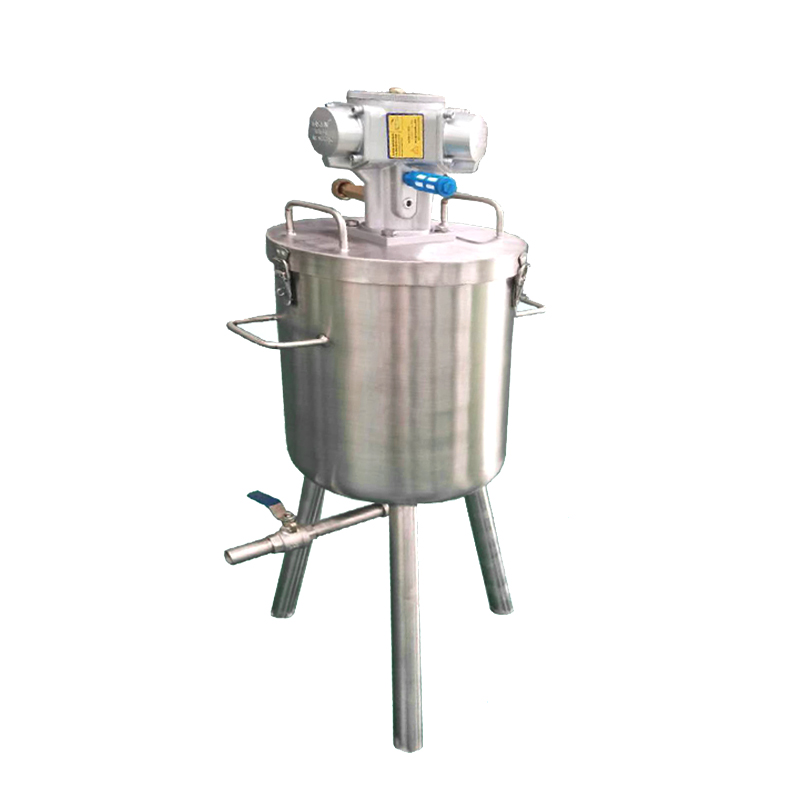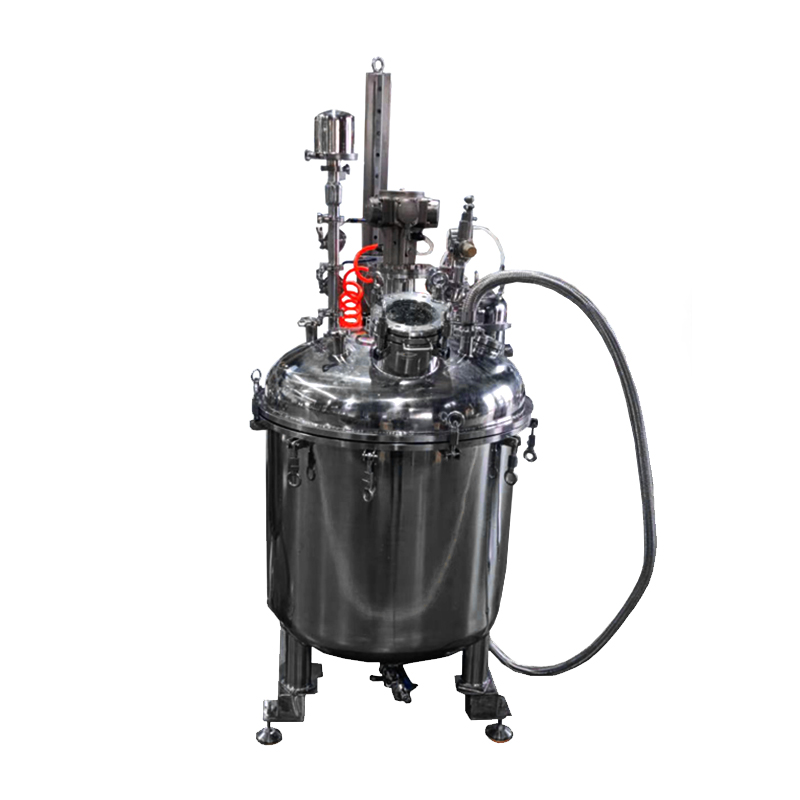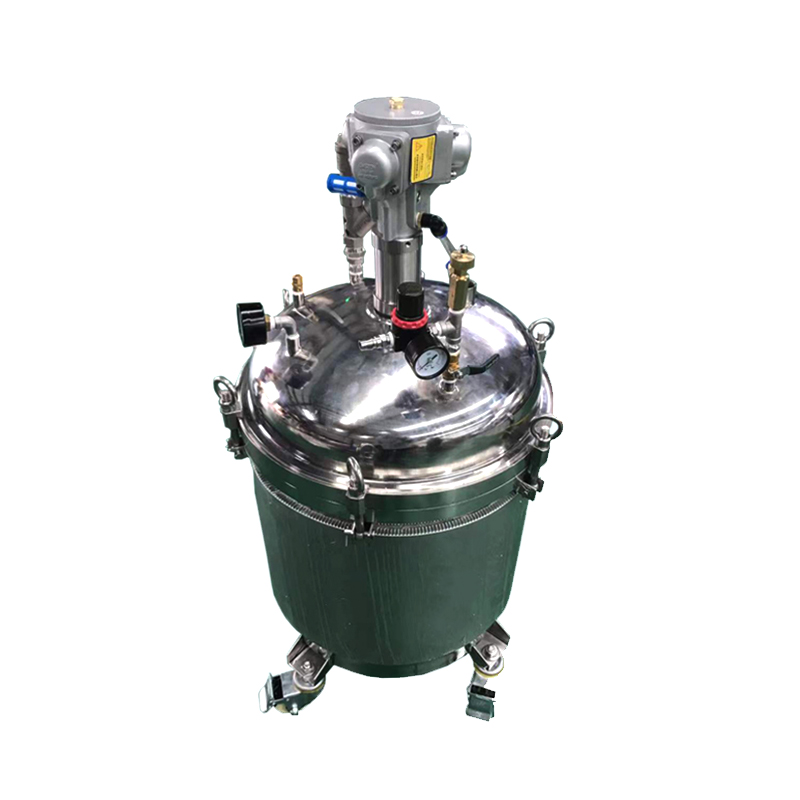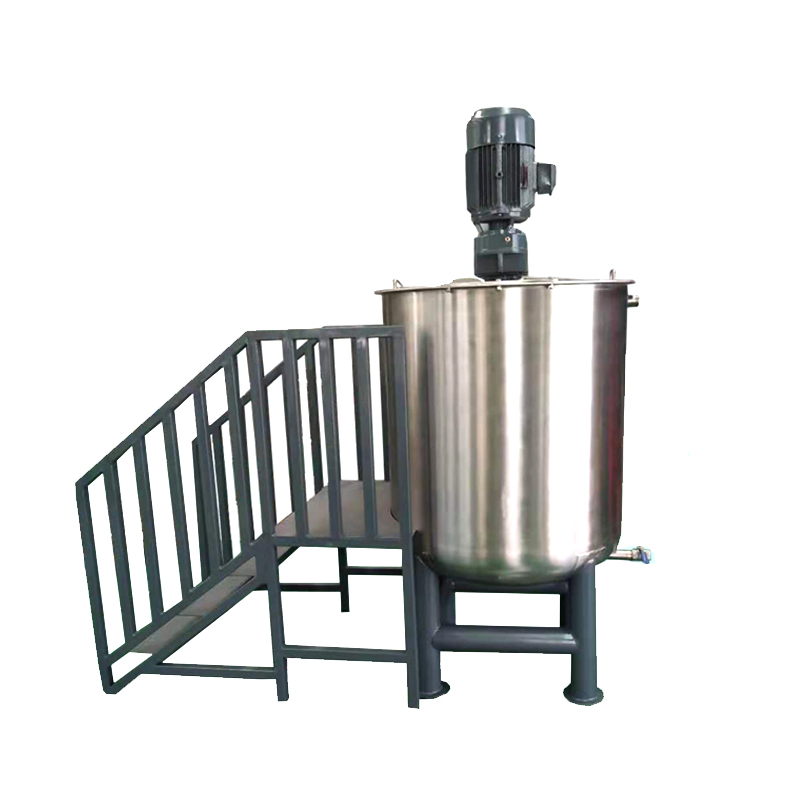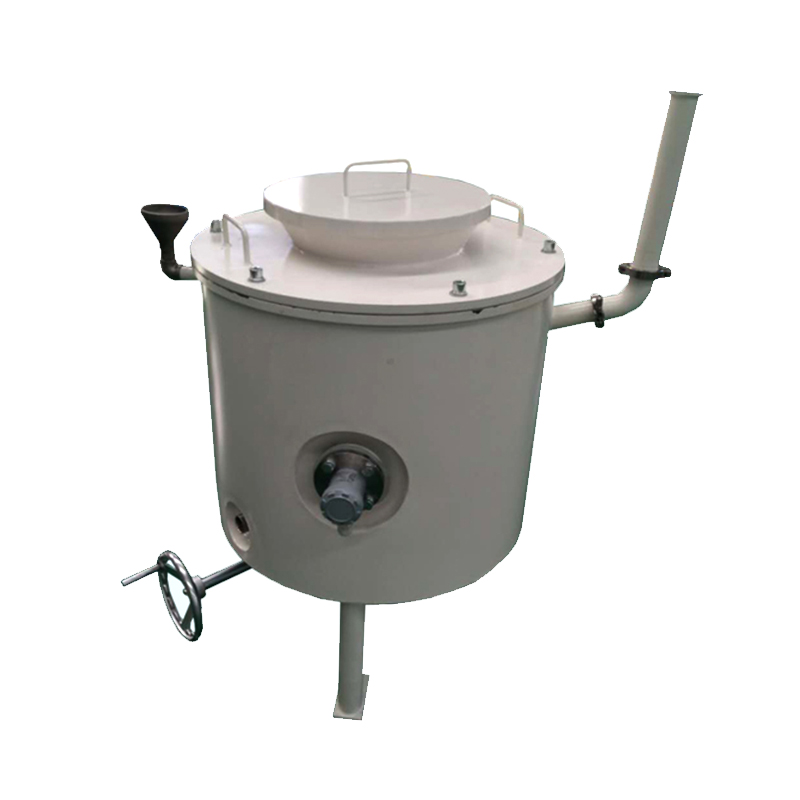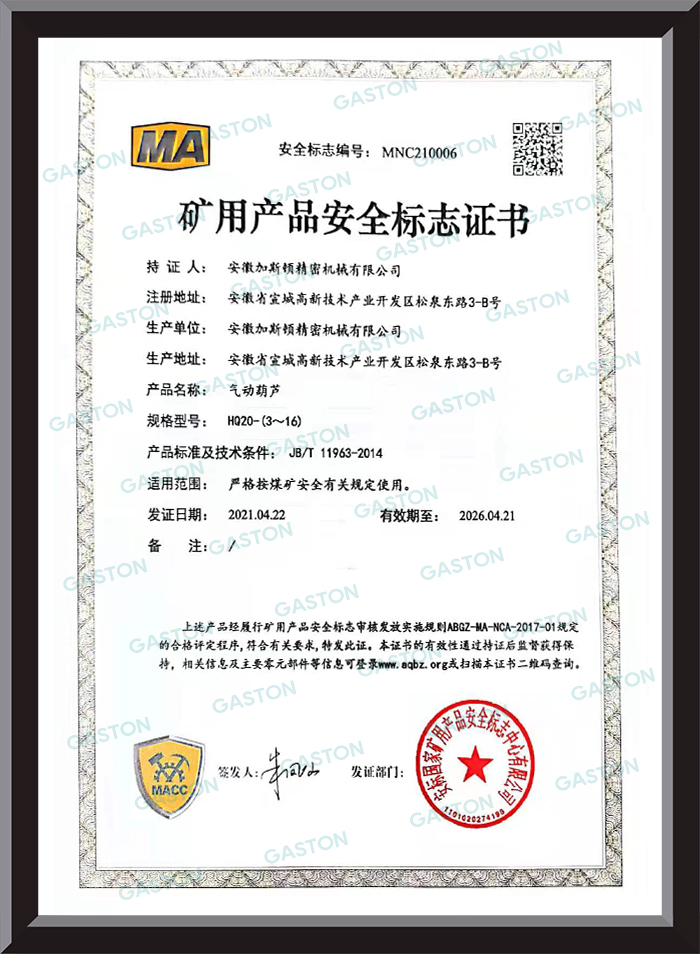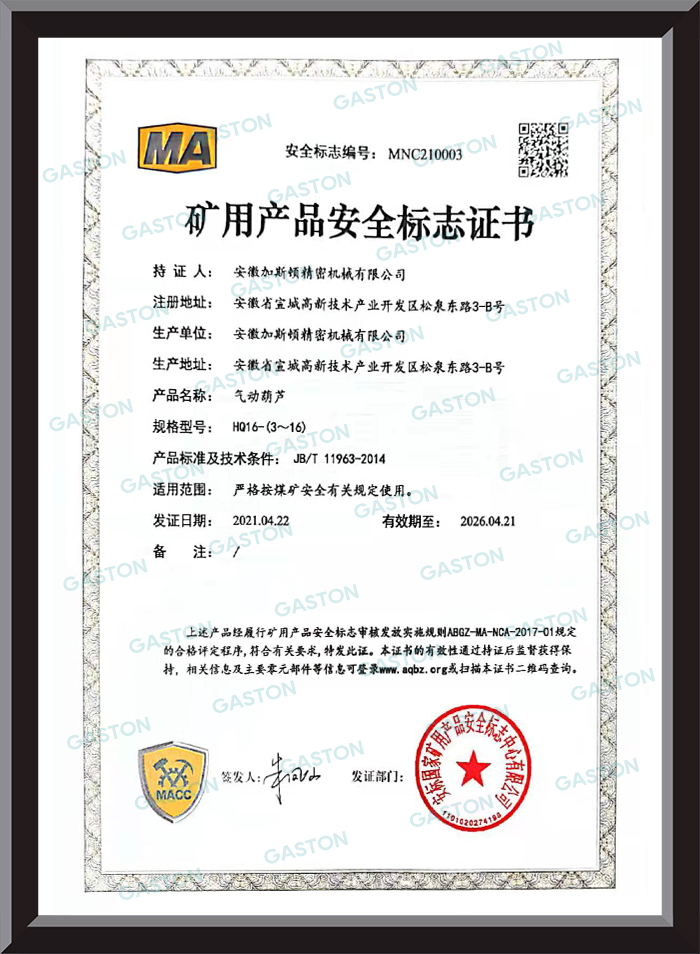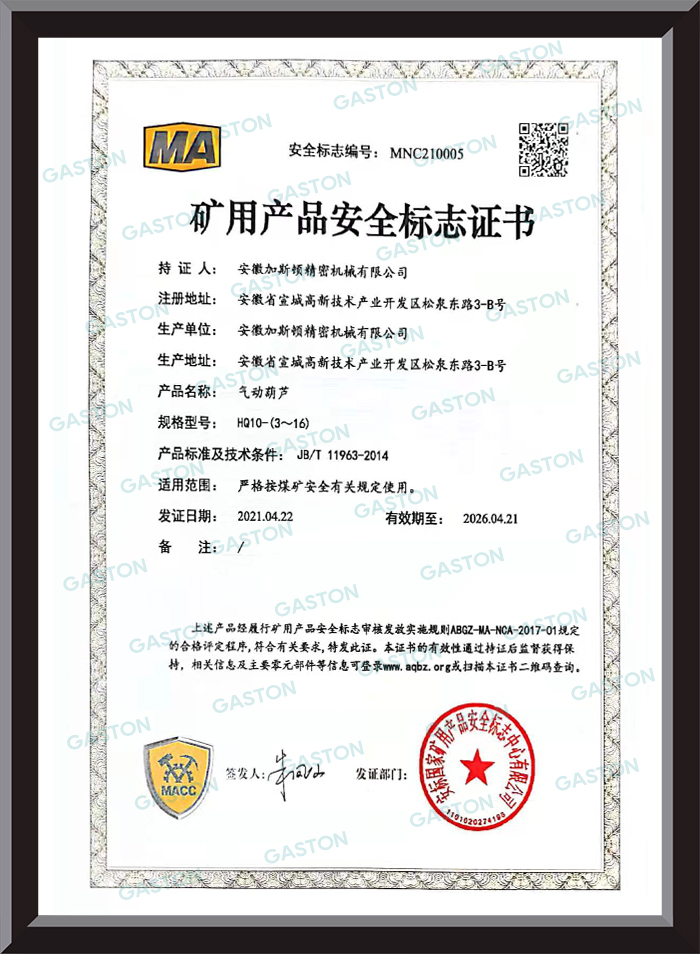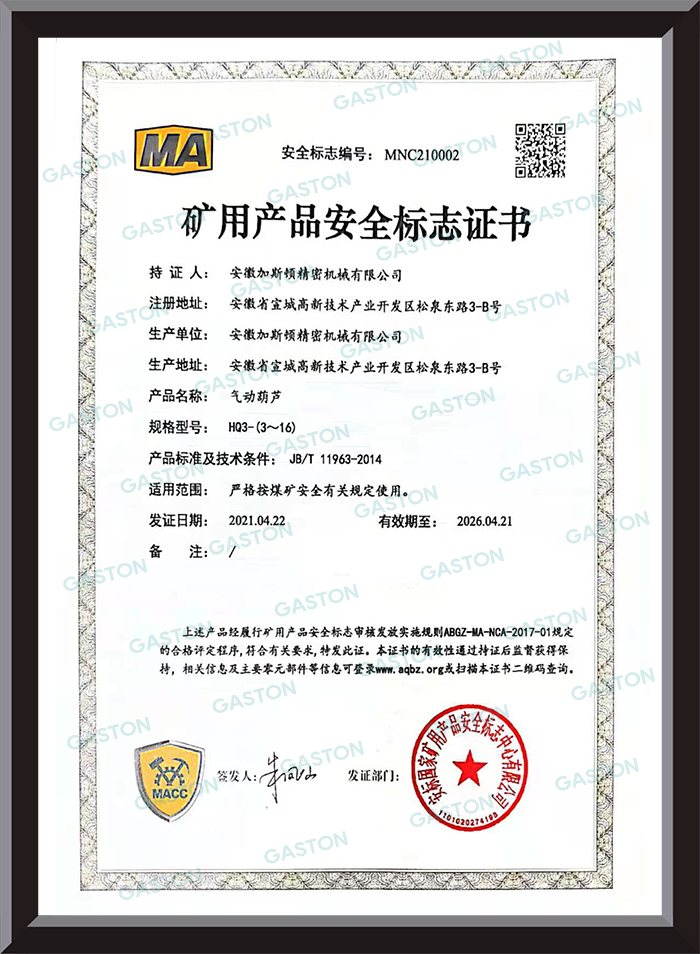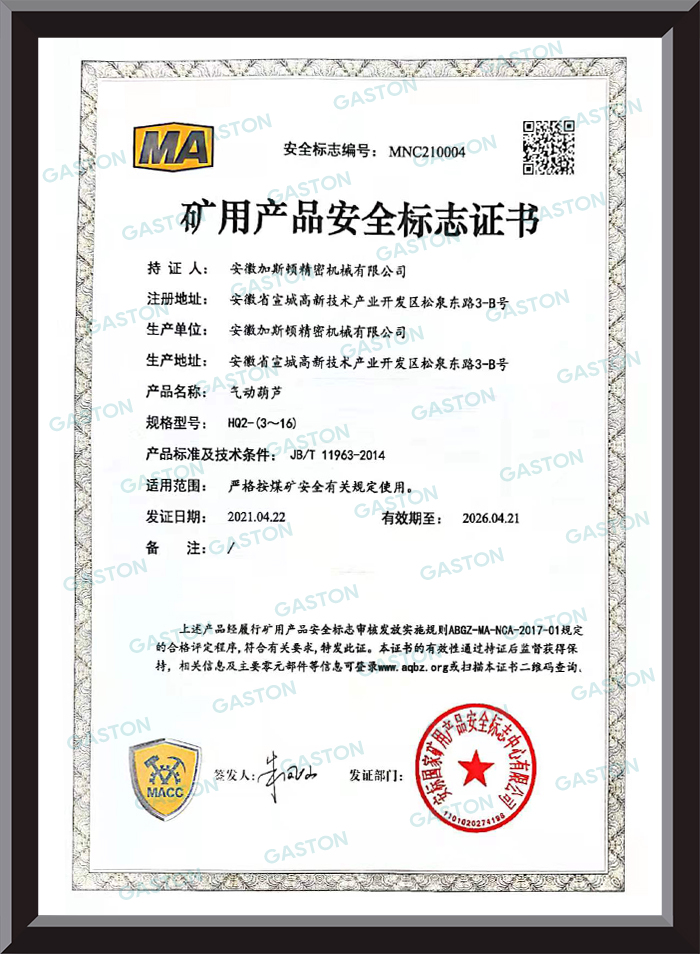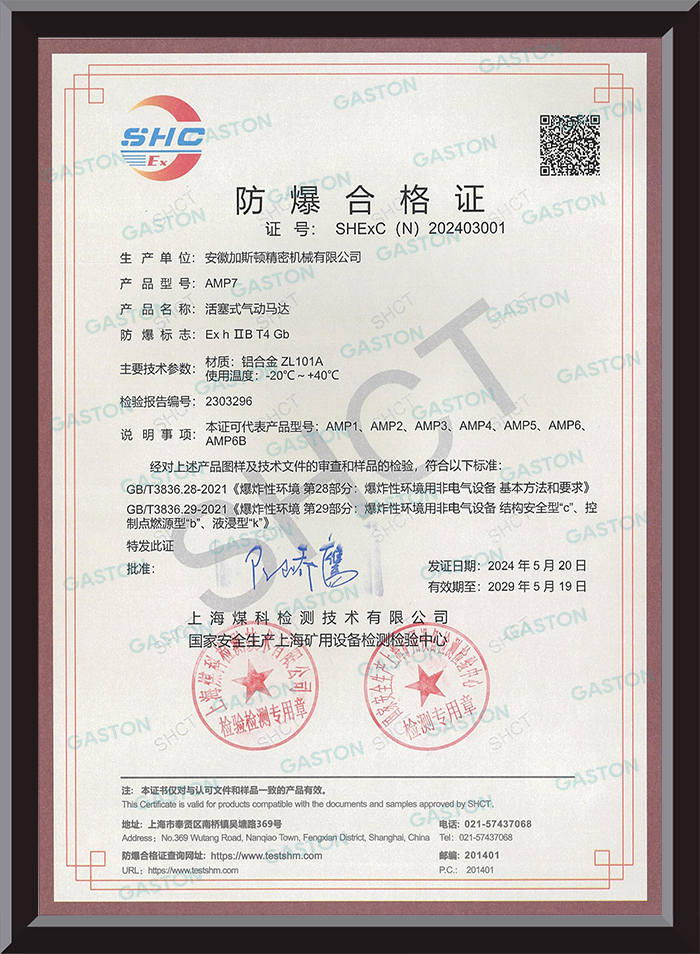Submit feedback

About Us
The company has been committed to product innovation for many years, focusing on the updating and upgrading of pneumatic motors. With fine concepts and continuous investment, it has created a creative design team and has designed multiple innovative pneumatic products. Currently, it has independent intellectual property rights and has obtained more than 30 product patents.
The company's main products include pneumatic motors and a series of products such as pneumatic hoists, pneumatic winches, pneumatic mixers, pneumatic emulsifiers, pneumatic explosion-proof pumps, pneumatic mixers, pneumatic fans, and industrial automation equipment pneumatic control system engineering developed based on specific production needs.
The company strictly follows the ISO9001 quality management system for product design, production, assembly, and testing. With the efforts of all employees, the company has passed the ISO9001 international quality system certification. Through strict procedures and high standards of auditing, the company has successfully passed the recognition of a "national high-tech enterprise". Gaston Company is gradually moving towards internationalization with its own strength and a global perspective.
Users with different needs will always be the coordinates we strive for and the driving force for constantly surpassing ourselves and striving for innovation! Gaston Company looks forward to sincere cooperation with friends from all walks of life at home and abroad to create brilliance together!
Honor Certificate
Latest News
-
Industry News 2025-09-22
With the advancement of industrial automation technology, pneumatic pumps, as an efficient and relia...
View More -
Industry News 2025-09-15
In modern industry, pneumatic industrial fans have become indispensable equipment in many sectors du...
View More -
Industry News 2025-09-08
In modern industrial production systems, the performance of power units directly determines the effi...
View More -
Industry News 2025-09-01
In modern industry, the choice of power transmission equipment directly impacts production efficienc...
View More -
Industry News 2025-08-22
In the vast arena of modern industrial production, lifting equipment is an indispensable "behind-the...
View More
Contact Us Now
Stainless Steel Pneumatic Mixing Barrel Industry knowledge
For the chemical industry, how does Stainless Steel Pneumatic Mixing Barrel resist corrosive materials and maintain its efficient mixing performance?
For the chemical industry, Stainless Steel Pneumatic Mixing Barrel (stainless steel pneumatic mixing barrel) usually adopts the following strategies to resist corrosive materials and maintain its efficient mixing performance:
1. Select stainless steel materials with high corrosion resistance
Material selection: Stainless steel materials are widely used in the chemical industry due to their excellent corrosion resistance. Common types of stainless steel include 304, 316L, etc. Among them, 316L stainless steel has higher corrosion resistance, especially in environments containing chloride ions or other corrosive media. Therefore, when choosing Stainless Steel Pneumatic Mixing Barrel, these highly corrosion-resistant stainless steel materials should be given priority.
Material standards: Ensure that the selected materials meet relevant industry standards such as ASTM, GB, etc. to ensure their quality and performance.
2. Optimize structural design to enhance corrosion resistance
Seal design: Use high-quality seals and sealing structures to prevent leakage of corrosive media and protect key components such as the inside of the mixing barrel and the pneumatic motor from corrosion.
Anti-corrosion coating: Anti-corrosion coatings such as epoxy resin, polytetrafluoroethylene (PTFE), etc. are applied to the inner wall of the mixing barrel or the easily corrosive parts to improve its corrosion resistance.
Avoid dead corners: The design should try to avoid the formation of hard-to-clean dead corners inside the mixing barrel to reduce the possibility of corrosive substances remaining.
3. Efficient mixing technology
Mixing mechanism: Use efficient mixing mechanisms, such as paddle, spiral or planetary agitators, to ensure that the materials are fully mixed in the mixing barrel.
Pneumatic motor: The pneumatic motor drives the agitator, which not only has safety performance such as explosion-proof and fireproof, but also can operate stably in corrosive environments. The selection of pneumatic motors should consider its power, speed and torque parameters to meet the mixing requirements of different materials.
Control system: Equipped with advanced control systems, such as PLC control systems, to achieve precise control of parameters such as mixing speed and mixing time, improve mixing efficiency and product quality.
4. Regular maintenance and care
Cleaning and inspection: Clean and inspect the mixing barrel regularly, remove residual materials and corrosion products in time, and prevent them from further corroding the mixing barrel.
Replace wearing parts: For wearing parts such as seals and agitators, they should be replaced in time according to the usage and the replacement cycle recommended by the manufacturer.
Lubrication and maintenance: Regularly lubricate and maintain key components such as pneumatic motors to ensure their normal operation and extend their service life.
In the pharmaceutical industry, how to ensure that the Stainless Steel Pneumatic Mixing Barrel can achieve accurate material mixing ratios while avoiding cross contamination?
In the pharmaceutical industry, it is crucial to ensure that the Stainless Steel Pneumatic Mixing Barrel can achieve accurate material mixing ratios and avoid cross contamination. This involves the design, operation, maintenance of the equipment and strict management of the entire production process. Here are some key measures:
I. Equipment design and selection
High-precision metering system:
The mixing barrel should be equipped with a high-precision metering system, such as an electronic scale or flow meter, to ensure that the amount of material added each time can be accurately controlled.
The metering system should be calibrated and its accuracy verified regularly.
Sealing performance:
The stainless steel mixing barrel and its connecting parts should have good sealing performance to prevent material leakage and external contaminants from entering.
Select high-quality seals, such as PTFE sealing rings, to improve the sealing effect.
Easy-to-clean design:
The inner wall of the mixing barrel and the agitator should be smooth for easy cleaning and removal of residues.
Avoid the formation of dead corners inside the mixing barrel that are difficult to clean.
2. Operational procedures and specifications
Material management:
Strictly manage the materials entering the mixing barrel to ensure that the material labels are clear and the quality is qualified.
Materials of different batches or types should be stored separately to avoid confusion.
Mixing operation:
Set the mixing speed and mixing time according to the process requirements to ensure that the materials are fully mixed and the mixing ratio is accurate.
During the mixing process, pay close attention to the state of the materials in the mixing barrel, and deal with any abnor
malities in a timely manner.
Cleaning and disinfection:
After each use, the mixing barrel should be thoroughly cleaned and disinfected to remove residues and kill microorganisms.
The cleaning and disinfection process should comply with relevant regulations such as GMP (Good Manufacturing Practice).
3. Cross-contamination prevention measures
Physical isolation:
Physical isolation measures such as isolation walls and buffer rooms are set up in the production area to reduce the risk of cross-contamination between different production processes.
The mixing barrel and its related equipment should be placed in a dedicated area and kept a certain distance from other equipment.
Staff training:
Train operators to understand the hazards and preventive measures of cross-contamination.
Emphasis personal hygiene and correct operating procedures, such as wearing protective clothing, gloves and other personal protective equipment.
Environmental monitoring:
Regularly monitor the environment in the production area, such as testing of air cleanliness, microbial content and other indicators.
If any abnormal situation is found, timely measures should be taken to deal with it.
Equipment maintenance:
Regularly maintain and service the mixing tank and related equipment to ensure that they are in good working condition.
Inspect and replace worn or damaged parts, such as seals, agitators, etc.


 English
English русский
русский Français
Français Español
Español 中文简体
中文简体 عربى
عربى

